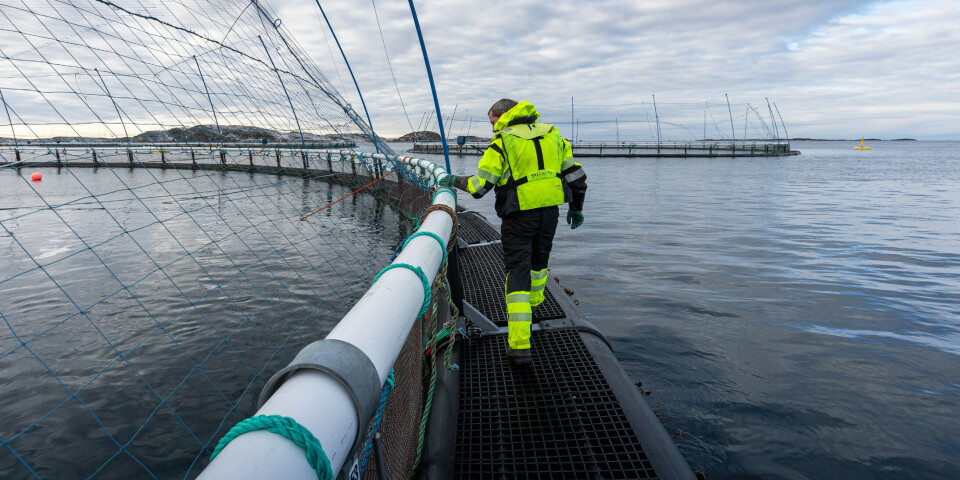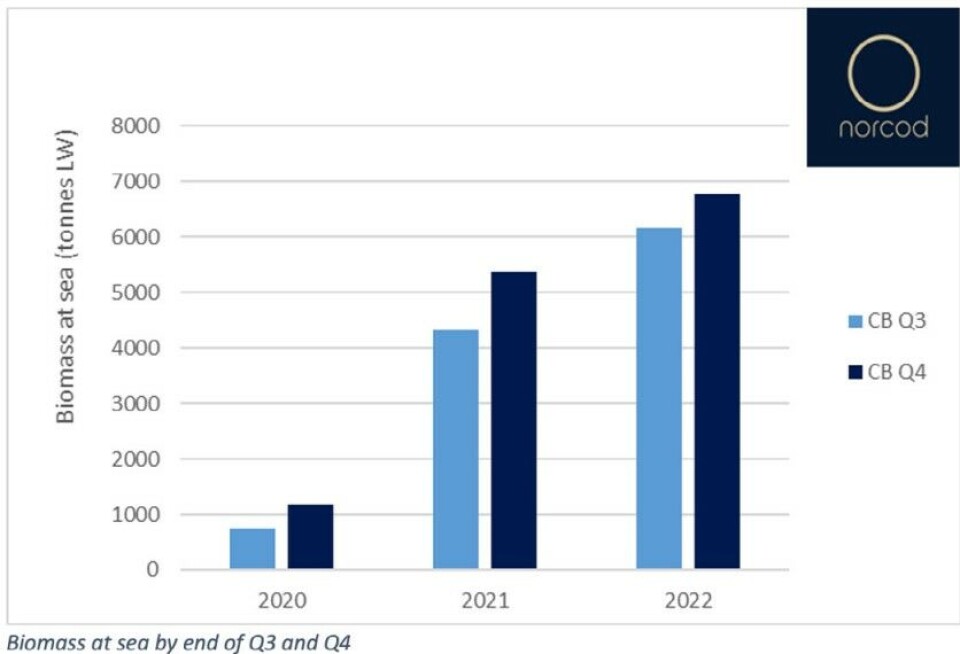
Norcod reduced operating loss by NOK 52.6m last year
Fish farmer still in the red but has increased volume and sites
Norwegian cod farmer Norcod earned revenue of NOK 51.4 million (£4.1 m) in the last quarter of 2022 and made an operating loss before fair value adjustment of NOK 32.3 m.
Total operating loss for the year before fair value adjustment amounted to NOK 123.1 m. “This corresponds to an improvement of NOK 52.6 m, or 60% for the period. There is also an improvement from year to year compared to Q4 2021,” said Norcod in its Q4 2022 report.
Norcod harvested 847 tonnes (whole fish equivalent) in Q4 and had 6,800 tonnes of biomass in the sea at the end of 2022, up from 5,400 tonnes at the end of 2021. Its 2022 generation of cod is expected to provide an estimated harvest volume of 11,000 tonnes WFE market ready in 2023/24.

The company’s most recently granted site in Nesna is planned to go into production in the first half of this year. Norcod now has a total of five cod-farming sites encompassing 19 licences with a maximum allowed biomass of 13,920 tonnes in total.
Maturing fish
Norcod said that it has had a close dialogue and good cooperation with the Directorate of Fisheries regarding localities where they have fish that must be harvested because they are reaching sexual maturity.
“Gonad development and the beginning of maturation in the final growth phase is an inherent challenge in cod farming and the farmers together with the professional/research environment are working to find solutions to tackle the exposure in the best possible way,” the company said.
Yesterday, Fish Farming Expert’s sister site, Kyst.no, reported that Nordoc had been ordered to harvest fish from a total of five cages in three locations following the discovery of sexually mature cod. The company has also previously had to slaughter fish that have started to reach sexual maturity.
Light control
“Norcod has a strategy to postpone and prevent maturation by means of light control. We see that light has an effect, and therefore we work to optimise the type of light, intensity, number, location, etc.,” said the company.
“In the long run, we are working towards being able to separate the fish by gender. The purpose is to establish pure female and male populations to reduce or eliminate the possibility of fertilisation should maturation occur. Simultaneously, there are several people working to produce sterile cod, which we hope will be successful as this will be the optimal solution.”
Early harvesting will result in lower production volumes, smaller fish, short delivery on long-term sales contracts with clients, and lower sales prices due to increased sales in the spot market, said Norcod.
Still on track
“Despite the operational and financial change to our 2021 generation, our growth plan and overall 2025 target is still on track and unchanged which means we will put four new batches into the sea phase during 2023,” wrote Norcod.
Norcod writes that all its fish are vaccinated to provide protection against the most common bacterial diseases (vibriosis, furunculosis, and now also winter ulcers).
“It seems that the vaccine works very well, and we have not experienced disease outbreaks at any of our locations. As a result, there has been no need to use antibiotics,” the company said.
Total volume in the current harvest period is estimated at approximately 7,000 tonnes WFE, according to the company.























































